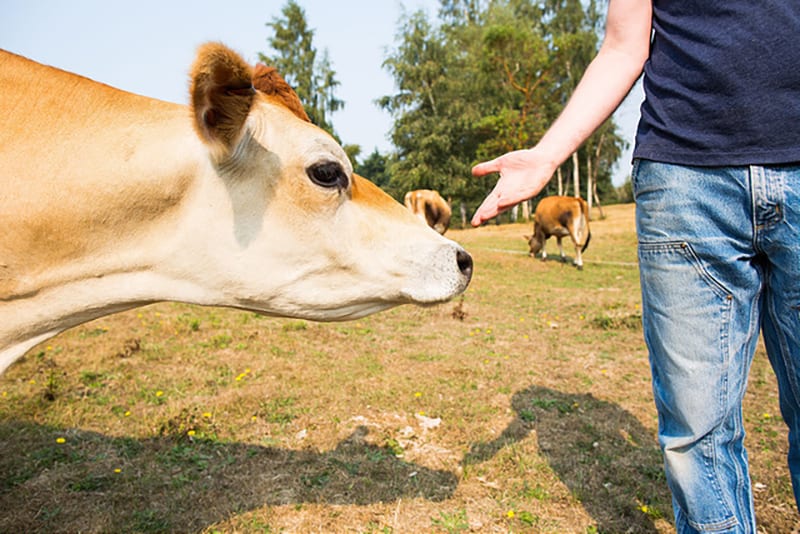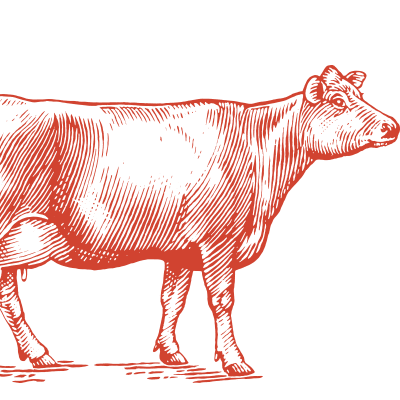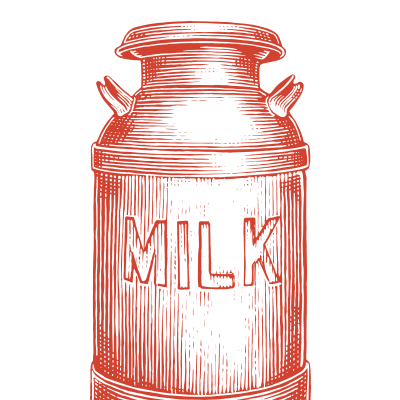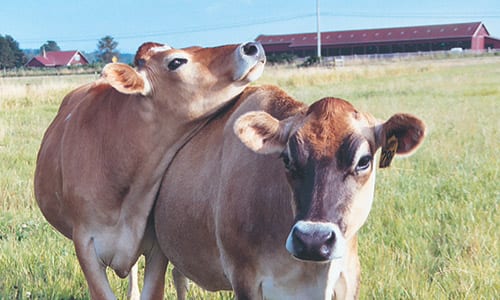The U.S. Department of Agriculture Organic Seal verifies that organic dairy farmers:
- Meet animal health and welfare standards
- Do not use antibiotics or growth hormones
- Feed their animals a 100-percent organic diet
- Provide cows with pasture
No growth promoters or hormones are allowed.
Hormones are used routinely by non-organic dairies. Shoppers who wish to avoid dairy produced with artificial hormones and drugs should choose organic.
Antibiotics and other drugs may not be used routinely as preventive measures.
Treatment is required for illness or to save an animal’s life, but afterward the animal products can’t be labeled organic.
Organic dairy animals are fed 100-percent organic feed.
It’s vegetarian feed, with only plant-based fiber sources. The feed never is genetically engineered and is grown without the use of synthetic fertilizers, pesticides and herbicides.Animals are raised humanely.Cattle, sheep and goats must have access to outside pastures and direct sunlight.
Organic dairy animals graze on grass.
Organic animals must graze on grass for the full length of the local grazing season, for a minimum of 120 days. Conventional dairy farms are not required to pasture their cows.
Organic dairy is traceable back to the farm.
Records are required for all feeding and healthcare practices for each animal. There is a verifiable audit trail to trace any animal back to its origin.
Grass-fed vs. Pasture-Raised
Grass-Fed: The U.S. Department of Agriculture revoked its definition for “grass fed” in 2016 and announced it no longer would verify producers’ grass-fed claims to a uniform USDA standard. USDA still will verify that meat label claims mean what a vendor says it means to them — but different vendor claims don’t necessarily mean the same thing. Grass-fed claims on dairy also reflect dramatically different criteria. A “grass fed” claim on yogurt can mean it’s made from the milk of cows that ate only some grass at some point in its life. Look for 100% grass fed claims or ask brands what it means to them.
Pasture-Raised or Pasture-Grazed: Organic dairy comes from animals grazed on pasture at least 120 days a year. Without the organic seal, the term pasture-raised indicates the animals graze on pasture some of the time, but there’s no statutory definition for pasture-raised. In other words, pasture-raised animals are not the same as grass-fed.
The Benefits of Organic Dairy
Better for you.
When cows eat grass, their milk is different than that of grain-fed cows. A study found that organic milk, compared to conventional, contained 60 to 80 percent more antioxidants and healthy fats when the cows are eating fresh grass in the summer, and 50 to 60 percent more in the winter. Organic dairy has been shown to have higher levels of vitamin E, heart-healthy omega-3 fatty acids and antioxidants. The benefits can be passed on. A study of lactating mothers found those consuming the greatest percentage of their meat and dairy from organic sources had the highest levels of heart-healthy, anti-inflammatory fats called conjugated linoleic acid (CLA) in their breast milk.
Better for the Environment.
Methane gas produced by cows is a potent greenhouse gas. Grass-based organic dairy farms produce substantially less of it — up to 40 percent less than a non-organic dairy farm. Also, organic agriculture means no synthetic pesticides or fertilizers are used to grow feed.
Better for Farmers.
According to a report by the Union of Concerned Scientists, the organic dairy sector provides greater economic opportunity and generates more jobs in rural communities than conventional dairies.




